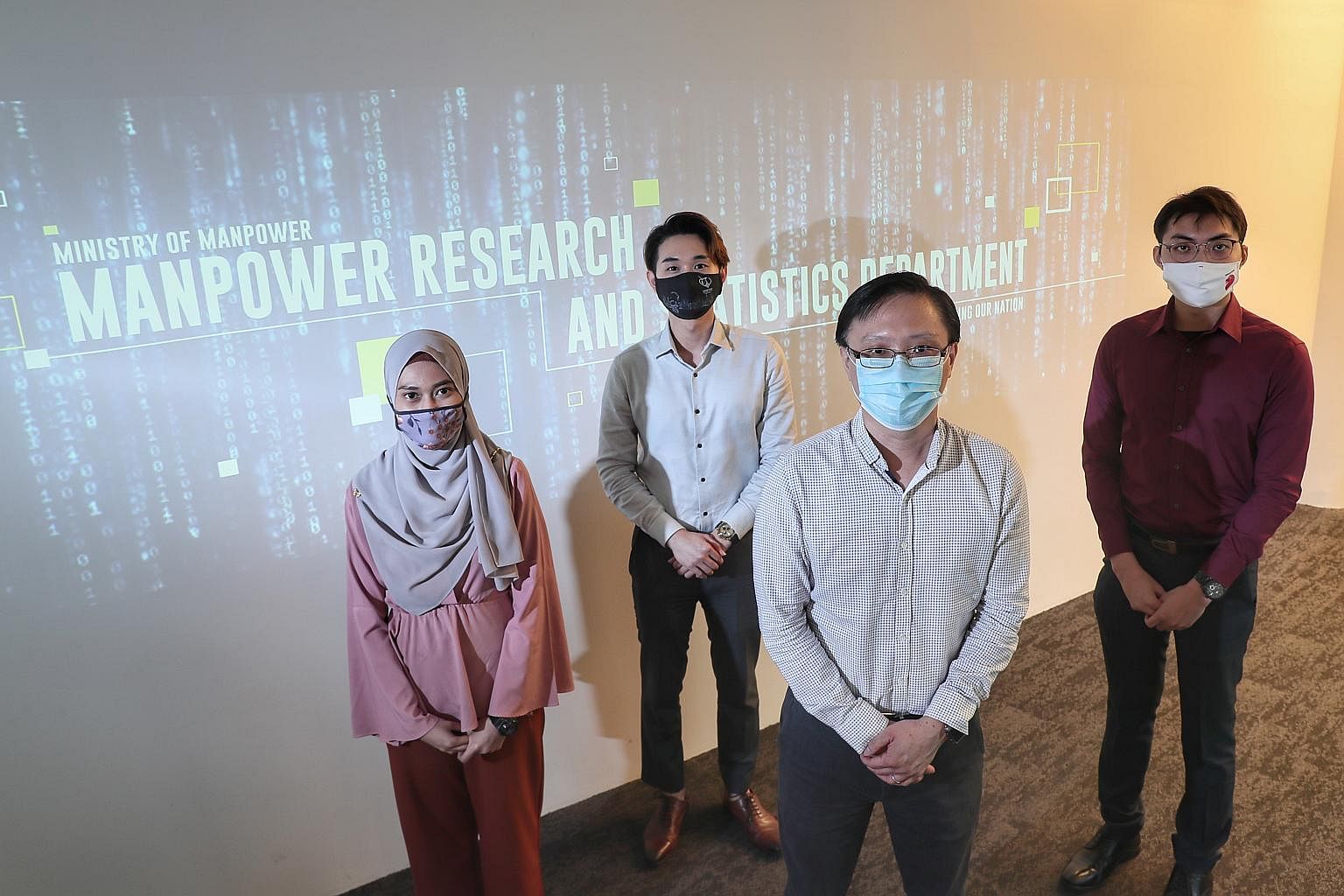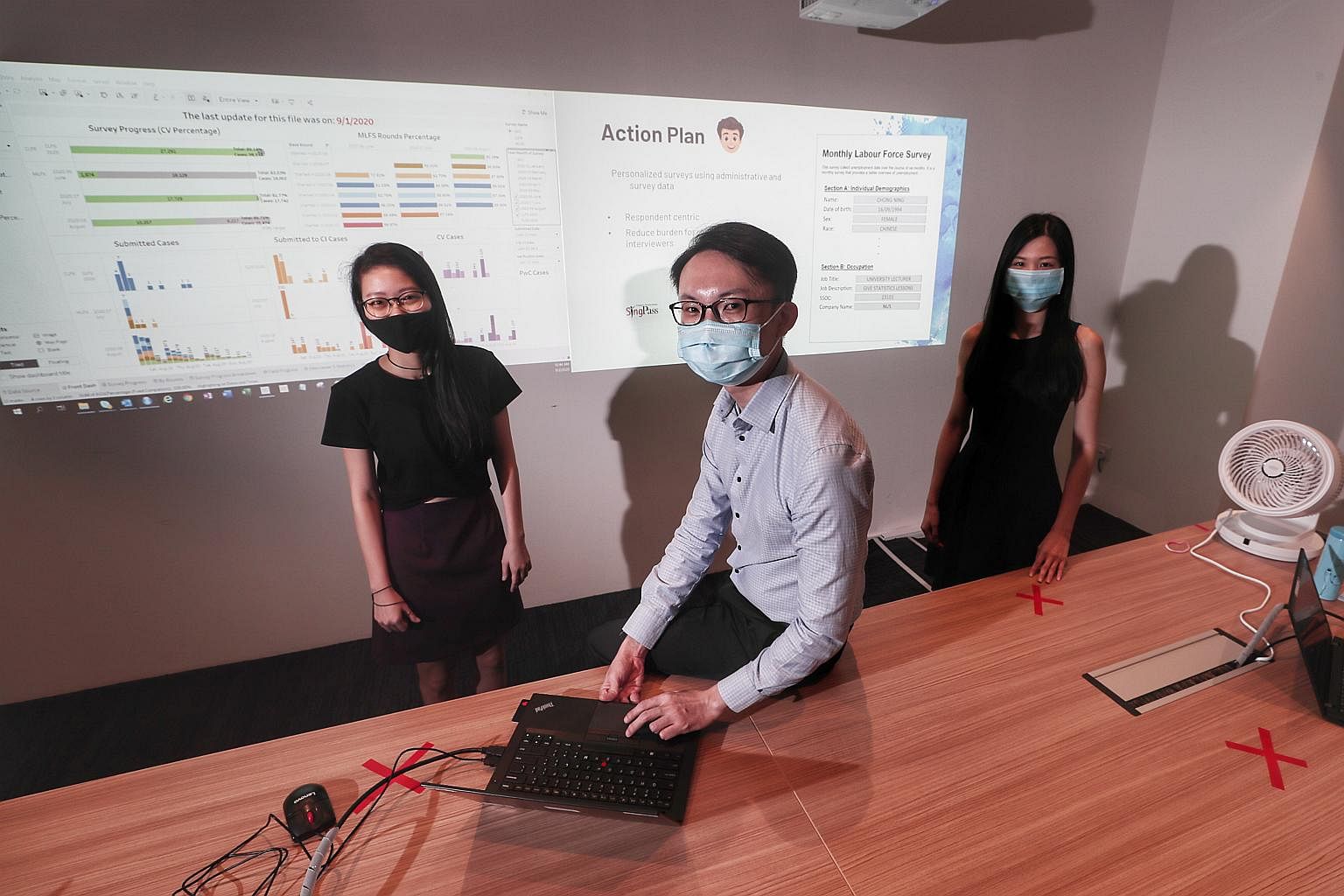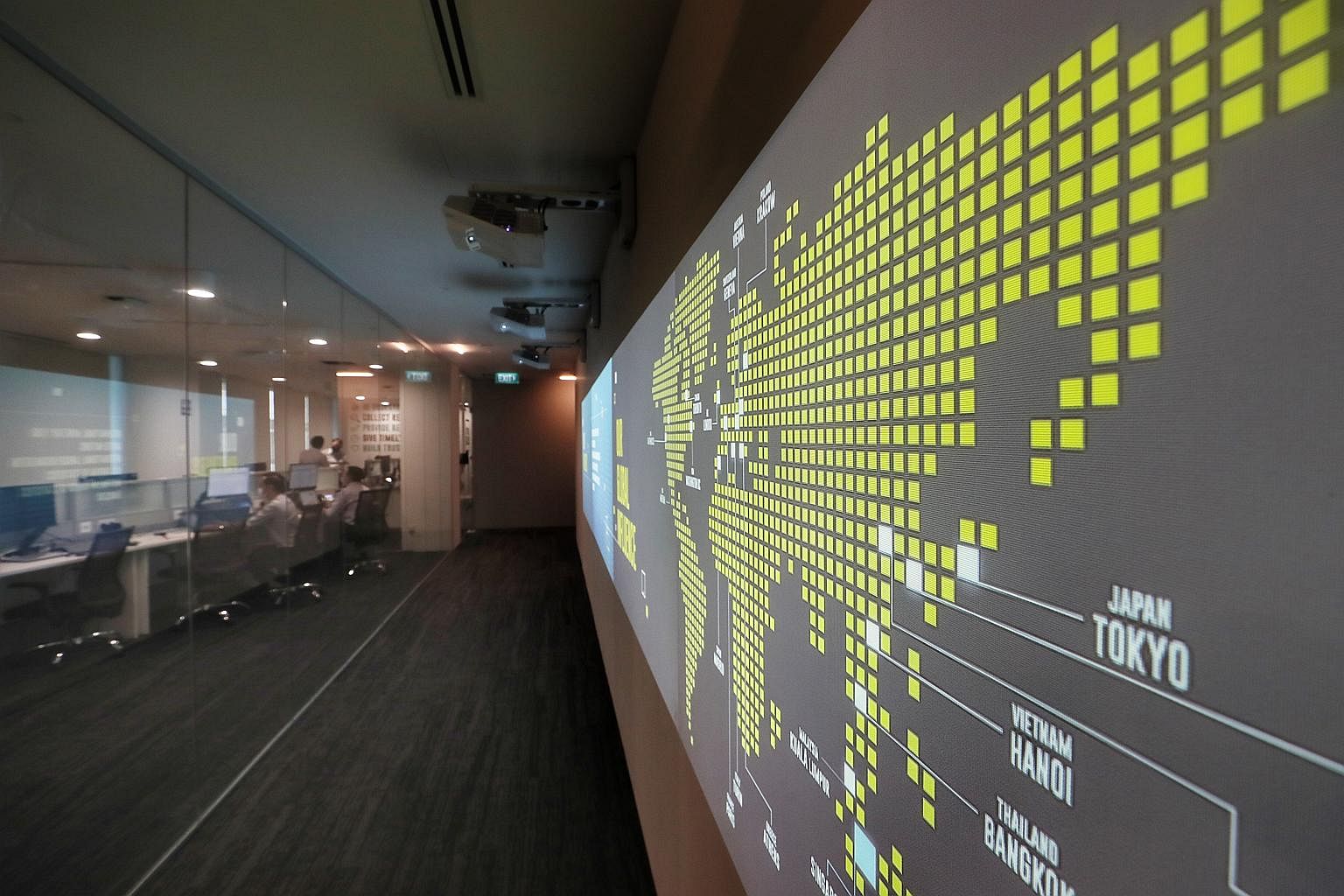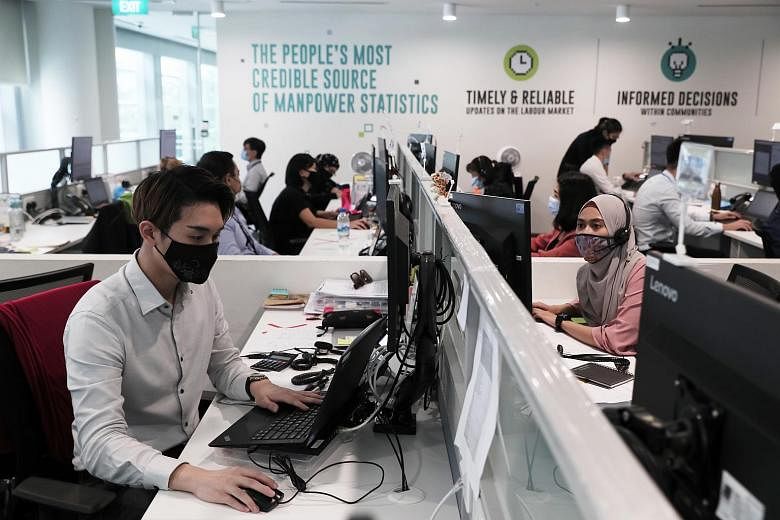SINGAPORE - From being shouted at by angry respondents to having to teach a crash course in labour market terms like "short work week" and "temporary layoffs", work as a Manpower Research and Statistics Department (MRSD) survey interviewer has its fair share of challenges.
The job involves calling up companies or households to help them, or remind them to, submit their responses to the Ministry of Manpower's surveys.
Some companies also take the chance to complain about other things such as CorpPass or foreign work pass issues, said Mr Vincent Chen, 27, an interviewer. He helps raise such cases to their respective departments.
After Covid-19 hit this year, the challenges have grown.
It has been even harder to reach company staff, many of whom are working from home, Mr Chen told The Straits Times.
Statistical executive Tan Chairat, 24, said interviewers contacting households have also cut down the number of "field visits" - house visits to people who do not answer their phones - from two or three times a week to two or three times a month.
But the survey responses are crucial because that is how the department gathers labour market data such as unemployment and retrenchment numbers and how quickly people can find a new job.
Interviewer Nur Asfarina Mohd Ishak, 23, said: "During Covid-19, we can see that the economy is not doing well. Through surveys, we are able to help people affected, by helping policymakers have an accurate representation of the situation."
Data from the household and employer surveys is released twice per quarter - first as preliminary estimates around the fourth week of the next quarter, based on the earlier part of the quarter in question, and then as final data around the 10th week of the next quarter.
The most recent data release was last Monday (Sept 14), which said retrenchments in the second quarter of the year were more than double those in the first quarter, and would probably have been higher if not for the record number of employees placed on short work weeks or temporary layoffs.
The Ministry of Manpower started collecting new metrics this year in response to the coronavirus crisis.
One is the employment diffusion index, which measures how widespread across industries employment change is. A sharp overall employment increase or fall caused by changes in only a few industries can have very different economic and policy implications than one caused by more widespread changes, noted the ministry in its first quarter labour market report.
Since April, it has also started collecting unemployment data monthly instead of quarterly. The ministry said it will now start releasing the topline unemployment rates monthly for citizens, citizens and permanent residents combined, and the overall labour force.
As the team steps up data collection amid Covid-19, it has to improve the way it gathers and analyses data so as to work more efficiently, said MRSD director Ang Boon Heng.
"We try to make things more efficient and fun; if not, we cannot attract young people to join since data collection is not a glamorous job," he said candidly.

The department employs more than 300 people. Besides interviewers, there are also statisticians, data scientists and others who ensure data is accurate.
Data analysts Chong Ning, 26, and Dorothy Chng, 25, are part of the data quality team that developed a system in collaboration with the United States Bureau of Labour Statistics to automatically determine the occupation code from job titles and descriptions provided by respondents. This saves the interviewers from having to search through about 1,000 codes.
For instance, from a job title of "receptionist" and a description of "arrange appointments at polyclinic" submitted, the code 42243 is generated.
The team also developed a programme to flag contradictory answers in different parts of the survey, so that interviewers can verify the data easily with respondents.
"Interviewers can just call back to check everything at once. Previously, we relied on interviewers understanding the survey concept themselves so they know if there's a contradiction," said Ms Chng.

The department is piloting an automated reporting system for companies to submit survey data automatically through their human resources systems. The companies benefit through getting a dashboard to see how they are performing compared with the industry average.
Mr Ang said the system was meant to be rolled out in May but was delayed because of Covid-19.
To improve the survey experience for respondents, the department is also working on breaking online surveys down into smaller parts so that respondents can answer on the go, and using speech analytics to monitor how effectively interviewers interact with respondents.
As for interviewers making house visits, a new system is being developed to match them with suitable respondents and calculate the optimal route.
To motivate interviewers in the department's operations centre in the URA Centre at Maxwell Road, there are encouraging quotes and digital leaderboards showing the number of cases completed projected on the front of the room. The top performers are paid a few extra hundred dollars each month.
Mr Ang said the scent being diffused in the office - usually white tea and fig - can even be changed when the team needs to be more productive.
One of the corridors displays a map showing dozens of countries the team has been to, to present their work.

Mr Ang said that in 2018, Singapore was rapporteur for the 20th International Conference of Labour Statisticians in Geneva, a conference held once every five years.
Singapore is also a member of the United Nations Economic Commission for Europe steering group on measuring the quality of employment, which Mr Ang said raises the nation's profile because it provides a platform to tell other countries what is happening in Singapore.
"It's us trying to say that we are also on par with people in terms of the methodology and the way we do our surveys. Our statistical methodology is also at the forefront," he said.
"We're trying to put ourselves on the world map."


